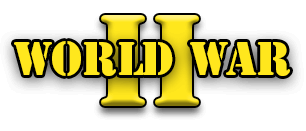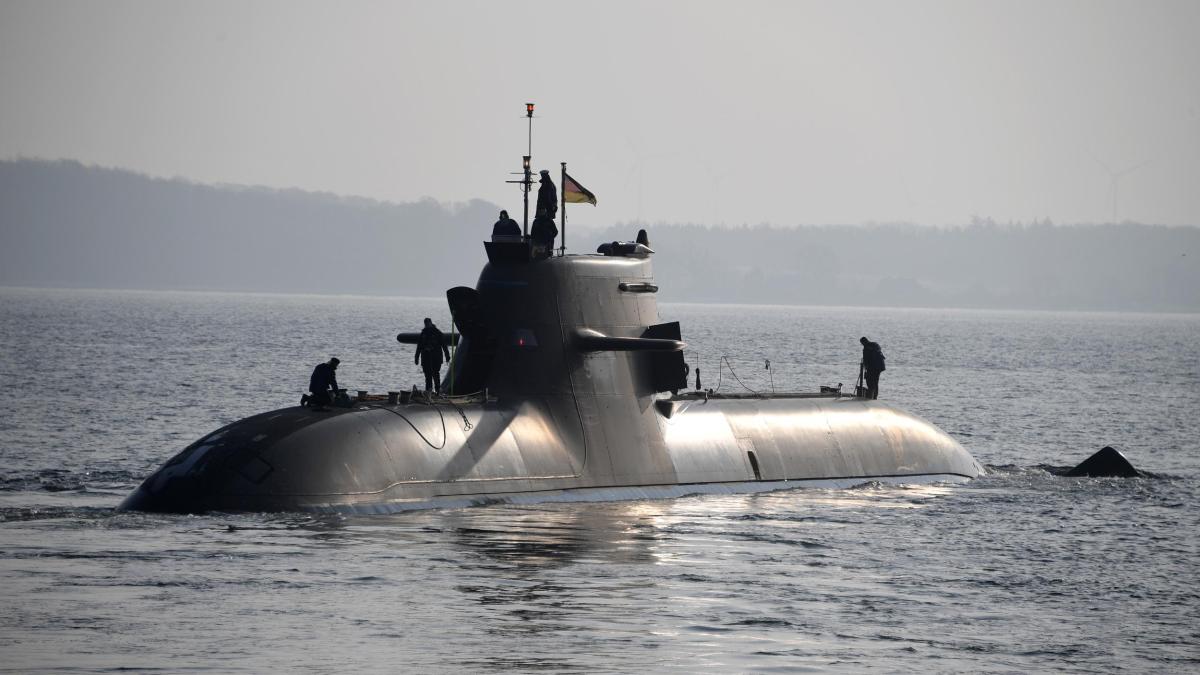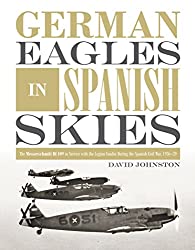German U-boat submarine U-36
German submarine U-36 was a Type VIIA U-boat of Nazi Germany’s Kriegsmarine which served during World War II.
Like all Type VIIA submarines, U-36 displaced 626 tonnes (616 long tons) while surfaced and 745 t (733 long tons) when submerged.
She was 64.51 m (211 ft 8 in) in overall length and had a 45.50 m (149 ft 3 in) pressure hull. U-36‘s propulsion consisted of two MAN 6-cylinder 4-stroke M6V 40/46 diesel engines that totaled 2,100–2,310 PS (1,540–1,700 kW; 2,070–2,280 bhp).
Her maximum rpm was between 470 and 485. The submarine was also equipped with two Brown, Boveri & Cie GG UB 720/8 electric motors that totaled 750 PS (550 kW; 740 shp).
Their maximum rpm was 322.
These engines gave U-36 a total speed of 17 knots (31 km/h; 20 mph) while surfaced and 8 knots (15 km/h; 9.2 mph) when submerged.
This resulted in a range of 6,200 nmi (11,500 km; 7,100 mi) while traveling at 10 knots (19 km/h; 12 mph) on the surface and 73–94 nmi (135–174 km; 84–108 mi) at 4 knots (7.4 km/h; 4.6 mph) when submerged.
The U-boat’s test depth was 220 m (720 ft) but she could go as deep as 230–250 m (750–820 ft) without having her hull crushed.
U-36‘s armament consisted of five 53.3 cm (21 in) torpedo tubes (four located in the bow and one in the stern).
She could have up to 11 torpedoes on board or 22 TMA or 33 TMB mines. U-36 was also equipped with a 8.8 cm SK C/35 naval gun and had 220 rounds for it stowed on board. Her anti-aircraft defenses consisted of one 2 cm (0.79 in) anti-aircraft gun
German Junkers Ju 87 Stuka Dive Bomber
The Junkers Ju 87 or Stuka (from Sturzkampfflugzeug, “dive bomber“) was a German dive bomber and ground-attack aircraft. Designed by Hermann Pohlmann, it first flew in 1935.
The Ju 87 made its combat debut in 1937 with the Luftwaffe‘s Condor Legion during the Spanish Civil War and served the Axis forces in World War II.
The aircraft is easily recognisable by its inverted gull wings and fixed spatted undercarriage. Upon the leading edges of its faired main gear legs were mounted the Jericho-Trompete (Jericho trumpet) wailing sirens, becoming the propaganda symbol of German air power and the so-called Blitzkrieg victories of 1939–1942.
The Stuka’s design included several innovations, including automatic pull-up dive brakes under both wings to ensure that the aircraft recovered from its attack dive even if the pilot blacked out from the high g-forces.
The Ju 87 operated with considerable success in close air support and anti-shipping at the outbreak of World War II.
It led air assaults in the invasion of Poland in September 1939.
Stukas were critical to the rapid conquest of Norway, the Netherlands, Belgium and France in 1940.
Though sturdy, accurate, and very effective against ground targets, the Stuka was, like many other dive bombers of the period, vulnerable to fighter aircraft.
During the Battle of Britain, its lack of manoeuvrability, speed and defensive armament meant that it required a heavy fighter escort to operate effectively.
After the Battle of Britain, the Stuka was used in the Balkans Campaign, the African and Mediterranean theatres and the early stages of the Eastern Front, where it was used for general ground support, as an effective specialised anti-tank aircraft and in an anti-shipping role.
Once the Luftwaffe lost air superiority, the Stuka became an easy target for enemy fighter aircraft.
It was produced until 1944 for lack of a better replacement.
By 1945 ground-attack versions of the Focke-Wulf Fw 190 had largely replaced the Ju 87, but it remained in service until the end of the war.
An estimated 6,500 Ju 87s of all versions were built between 1936 and August 1944.
Oberst Hans-Ulrich Rudel was the most successful Stuka pilot and the most highly decorated German serviceman of the Second World War.
Messerschmitt Bf 109
The Messerschmitt Bf 109 is a German World War II fighter aircraft that was, along with the Focke-Wulf Fw 190, the backbone of the Luftwaffe‘s fighter force.
The Bf 109 first saw operational service in 1937 during the Spanish Civil War and was still in service at the dawn of the jet age at the end of World War II in 1945.
It was one of the most advanced fighters when it first appeared, with an all-metal monocoque construction, a closed canopy, and retractable landing gear. It was powered by a liquid-cooled, inverted-V12 aero engine.
From the end of 1941, the Bf 109 was steadily supplanted by the Focke-Wulf Fw 190.
It was called the Me 109 by Allied aircrew and some German aces, even though this was not the official German designation.
It was designed by Willy Messerschmitt and Robert Lusser who worked at Bayerische Flugzeugwerke during the early to mid-1930s.
It was conceived as an interceptor, although later models were developed to fulfill multiple tasks, serving as bomber escort, fighter-bomber, day-, night-, all-weather fighter, ground-attack aircraft, and reconnaissance aircraft.
It was supplied to several states during World War II, and served with several countries for many years after the war.
The Bf 109 is the most produced fighter aircraft in history, with a total of 33,984 airframes produced from 1936 to April 1945.
Some of the Bf 109 production took place in Nazi concentration camps through slave labor.
The Bf 109 was flown by the three top-scoring fighter aces of all time, who claimed 928 victories among them while flying with Jagdgeschwader 52, mainly on the Eastern Front.
The highest-scoring, Erich Hartmann, was credited with 352 victories. The aircraft was also flown by Hans-Joachim Marseille, the highest-scoring ace in the North African Campaign who shot down 158 enemy aircraft (in about a third of the time).
It was also flown by many aces from other Axis nations, notably the Finn Ilmari Juutilainen, the highest-scoring non-German ace.
Pilots from Italy, Romania, Croatia, Bulgaria, and Hungary also flew the Bf 109. Through constant development, the Bf 109 remained competitive with the latest Allied fighter aircraft until the end of the war.
Adolf Hitler
Adolf Hitler – Germany
Adolf Hitler (German: [ˈadɔlf ˈhɪtlɐ] (About this soundlisten); 20 April 1889 – 30 April 1945) was a German politician and leader of the Nazi Party (Nationalsozialistische Deutsche Arbeiterpartei; NSDAP).
He rose to power as the chancellor of Germany in 1933 and then as Führer in 1934.
During his dictatorship from 1933 to 1945, he initiated World War II in Europe by invading Poland on 1 September 1939.
He was closely involved in military operations throughout the war and was central to the perpetration of the Holocaust. Hitler was born in Austria—then part of Austria-Hungary—and was raised near Linz.
He moved to Germany in 1913 and was decorated during his service in the German Army in World War I.
In 1919, he joined the German Workers’ Party (DAP), the precursor of the NSDAP, and was appointed leader of the NSDAP in 1921. In 1923, he attempted to seize power in a failed coup in Munich and was imprisoned. In jail, he dictated the first volume of his autobiography and political manifesto Mein Kampf (“My Struggle”).
After his release in 1924, Hitler gained popular support by attacking the Treaty of Versailles and promoting Pan-Germanism, anti-semitism and anti-communism with charismatic oratory and Nazi propaganda.
He frequently denounced international capitalism and communism as part of a Jewish conspiracy.
By November 1932, the Nazi Party had the most seats in the German Reichstag but did not have a majority.
As a result, no party was able to form a majority parliamentary coalition in support of a candidate for chancellor.
Former chancellor Franz von Papen and other conservative leaders persuaded President Paul von Hindenburg to appoint Hitler as chancellor on 30 January 1933.
Shortly after, the Reichstag passed the Enabling Act of 1933 which began the process of transforming the Weimar Republic into Nazi Germany, a one-party dictatorship based on the totalitarian and autocratic ideology of National Socialism.
Hitler aimed to eliminate Jews from Germany and establish a New Order to counter what he saw as the injustice of the post-World War I international order dominated by Britain and France.
His first six years in power resulted in rapid economic recovery from the Great Depression, the abrogation of restrictions imposed on Germany after World War I, and the annexation of territories inhabited by millions of ethnic Germans, which gave him significant popular support.
Hitler sought Lebensraum (“living space”) for the German people in Eastern Europe, and his aggressive foreign policy is considered the primary cause of World War II in Europe.
He directed large-scale rearmament and, on 1 September 1939, invaded Poland, resulting in Britain and France declaring war on Germany. In June 1941, Hitler ordered an invasion of the Soviet Union. By the end of 1941, German forces and the European Axis powers occupied most of Europe and North Africa.
These gains were gradually reversed after 1941, and in 1945 the Allied armies defeated the German army.
On 29 April 1945, he married his longtime lover Eva Braun.
Less than two days later, the couple committed suicide to avoid capture by the Soviet Red Army.
Their corpses were burned.
Under Hitler’s leadership and racially motivated ideology, the Nazi regime was responsible for the genocide of at least 5.5 million Jews and millions of other victims whom he and his followers deemed Untermenschen (subhumans) or socially undesirable.
Hitler and the Nazi regime were also responsible for the killing of an estimated 19.3 million civilians and prisoners of war. In addition, 28.7 million soldiers and civilians died as a result of military action in the European theatre.
The number of civilians killed during World War II was unprecedented in warfare, and the casualties constitute the deadliest conflict in history.
Germany
Nazi Germany, officially known as the German Reich until 1943 and Greater German Reich in 1943–45, was the German state between 1933 and 1945, when Adolf Hitler and the Nazi Party controlled the country which they transformed into a dictatorship.
Under Hitler’s rule, Germany quickly became a totalitarian state where nearly all aspects of life were controlled by the government.
The Third Reich, meaning “Third Realm” or “Third Empire”, alluded to the Nazis’ conceit that Nazi Germany was the successor to the earlier Holy Roman Empire (800–1806) and German Empire (1871–1918).
The Third Reich, which Hitler and the Nazis referred to as the Thousand Year Reich, ended in May 1945 after just 12 years, when the Allies defeated Germany, ending World War II in Europe.
On 30 January 1933, Hitler was appointed Chancellor of Germany, the head of government, by the President of the Weimar Republic, Paul von Hindenburg, the head of State.
The Nazi Party then began to eliminate all political opposition and consolidate its power.
Hindenburg died on 2 August 1934 and Hitler became dictator of Germany by merging the offices and powers of the Chancellery and Presidency.
A national referendum held 19 August 1934 confirmed Hitler as sole Führer (Leader) of Germany.
All power was centralised in Hitler’s person and his word became the highest law. The government was not a coordinated, co-operating body, but a collection of factions struggling for power and Hitler’s favour. In the midst of the Great Depression, the Nazis restored economic stability and ended mass unemployment using heavy military spending and a mixed economy.
Using deficit spending, the regime undertook a massive secret rearmament program and the construction of extensive public works projects, including the construction of Autobahnen (motorways).
The return to economic stability boosted the regime’s popularity.
Racism, Nazi eugenics, and especially antisemitism, were central ideological features of the regime.
The Germanic peoples were considered by the Nazis to be the master race, the purest branch of the Aryan race. Discrimination and the persecution of Jews and Romani people began in earnest after the seizure of power. The first concentration camps were established in March 1933.
Jews and others deemed undesirable were imprisoned, and liberals, socialists, and communists were killed, imprisoned, or exiled.
Christian churches and citizens that opposed Hitler’s rule were oppressed and many leaders imprisoned.
Education focused on racial biology, population policy, and fitness for military service. Career and educational opportunities for women were curtailed.
Recreation and tourism were organised via the Strength Through Joy program, and the 1936 Summer Olympics showcased Germany on the international stage.
Propaganda Minister Joseph Goebbels made effective use of film, mass rallies, and Hitler’s hypnotic oratory to influence public opinion.
The government controlled artistic expression, promoting specific art forms and banning or discouraging others.
The Nazi regime dominated neighbours through military threats in the years leading up to war. Nazi Germany made increasingly aggressive territorial demands, threatening war if these were not met.
It seized Austria and almost all of Czechoslovakia in 1938 and 1939. Germany signed a non-aggression pact with the Soviet Union and invaded Poland on 1 September 1939, launching World War II in Europe.
By early 1941, Germany controlled much of Europe. Reichskommissariats took control of conquered areas and a German administration was established in the remainder of Poland.
Germany exploited the raw materials and labour of both its occupied territories and its allies.
Genocide and mass murder became hallmarks of the regime. Starting in 1939, hundreds of thousands of German citizens with mental or physical disabilities were murdered in hospitals and asylums.
Einsatzgruppen paramilitary death squads accompanied the German armed forces inside the occupied territories and conducted the mass killings of millions of Jews and other Holocaust victims.
After 1941, millions of others were imprisoned, worked to death, or murdered in Nazi concentration camps and extermination camps.
This genocide is known as the Holocaust.
While the German invasion of the Soviet Union in 1941 was initially successful, the Soviet resurgence and entry of the United States into the war meant that the Wehrmacht (German armed forces) lost the initiative on the Eastern Front in 1943 and by late 1944 had been pushed back to the pre-1939 border.
Large-scale aerial bombing of Germany escalated in 1944 and the Axis powers were driven back in Eastern and Southern Europe.
After the Allied invasion of France, Germany was conquered by the Soviet Union from the east and the other Allies from the west, and capitulated in May 1945.
Hitler’s refusal to admit defeat led to massive destruction of German infrastructure and additional war-related deaths in the closing months of the war.
The victorious Allies initiated a policy of denazification and put many of the surviving Nazi leadership on trial for war crimes at the Nuremberg trials.
The Panzer
The Panzer II is the common name used for a family of German tanks used in World War II. The official German designation was Panzerkampfwagen II (abbreviated PzKpfw II).
Although the vehicle had originally been designed as a stopgap while larger, more advanced tanks were developed, it nonetheless went on to play an important role in the early years of World War II, during the Polish and French campaigns.
The Panzer II was the most numerous tank in the German Panzer divisions at the beginning of the war.[2] It was used in both North Africa against the Western Allies and on the Eastern Front against the Soviet Union.
The Panzer II was supplanted by the Panzer III and IV medium tanks by 1940/1941. By the end of 1942, it had been largely removed from front line service and it was used for training and on secondary fronts.
The turrets of the then-obsolete Panzer Is and Panzer IIs were reused as gun turrets on specially built defensive bunkers, particularly on the Atlantic Wall. Production of the tank itself ceased by January 1944, but its chassis remained in use as the basis of several other armoured vehicles, chiefly self-propelled artillery and tank destroyers such as the Wespe and Marder II respectively.











